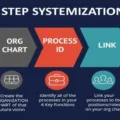In today’s fast-paced business environment, the significance of structuring and systemizing business operations cannot be overstated. Business systemization is not just a luxury for the large corporations; it’s a necessity for businesses of all sizes seeking efficiency, scalability, and sustainability.
This comprehensive exploration aims to guide entrepreneurs, small business owners, and solopreneurs on their journey to creating a streamlined, systems-driven business that thrives on consistency and predictability.
1. The Blueprint of Business Systemization: Mapping Out Every Detail
The first and perhaps most crucial step in systemizing your business involves developing a detailed map of your operations. Imagine creating a blueprint that outlines every process, task, and responsibility within your organization. This is not just about having a broad understanding of what your business does but about diving deep into the minutiae of daily operations.
Why is this important?
Many business owners believe they have a clear grasp of their operations, but documenting every process can uncover inefficiencies, redundancies, and even opportunities for innovation that were previously hidden. This step is about laying everything out on the table—literally and figuratively—so you can see the full picture of your business operations.
2. Timing Is Everything: The When of Systemization
After identifying every task and process, the next step is to determine the timing of these activities. This involves setting a schedule for regular tasks and defining turnaround times for specific projects or demand-driven activities. The goal here is to establish a rhythm for your business operations, creating a predictable and efficient workflow.
Integrating technology:
Utilizing a task management tool at this stage can greatly facilitate the scheduling and prioritization of tasks. Platforms like ClickUp and SmartSuite offer features that allow businesses to organize their operations, set deadlines, and monitor progress, all within a centralized system. This not only enhances efficiency but also provides valuable insights into the time management aspects of your operations.
3. The How: Crafting Your Business’s Recipe Book
Documenting the methodology behind each process is akin to writing a recipe book for your business operations. This step involves creating detailed instructions, templates, and checklists that can be followed to execute tasks with consistency and quality.
Whether it’s customer service protocols, content creation processes, or product development strategies, having a clear ‘how’ ensures that every task is performed to the highest standard.
The benefit of simplicity:
It’s crucial to note that these ‘recipes’ do not need to be overly complex. In many cases, simplicity leads to better adherence and fewer errors. Wearing too many hats can quickly is a recipe for chaos and overwhelm that will inadvertently hamper the growth and sustainability of your company.
A well-designed Google Docs template or a straightforward checklist can be just as effective as more elaborate systems, as long as they clearly convey the necessary steps and expectations.
4. Assigning Roles and Responsibilities: The Who
Knowing who is responsible for what is essential for accountability and workload distribution. In the early stages of a business, you might find yourself handling multiple roles. Wearing too many hats quickly becomes a bottle neck that hampers the viability and future growth of your business.
However, documenting responsibilities lays the groundwork for future delegation and scalability. As your business grows and you bring on more team members, having a clear delineation of roles and responsibilities will be invaluable for smooth operations and onboarding.
The power of delegation:
Effective systemization frees up business owners to focus on strategic growth rather than getting bogged down in day-to-day operations. By assigning responsibilities, you not only ensure that tasks are completed efficiently but also empower your team members by trusting them with specific aspects of the business.
5. Continuous Improvement: Keeping the Wheels Turning
Perhaps the most dynamic aspect of business systemization is the commitment to continuous improvement. Like physical fitness, the health of your business systems requires regular attention and adaptation. This means regularly reviewing processes, soliciting feedback from your team, and staying abreast of new technologies or methodologies that could enhance your operations.
Embracing feedback:
One of the most powerful tools in continuous improvement is feedback from your team and customers. They are often the first to encounter issues with existing systems or to identify opportunities for improvement. Creating channels for open and constructive feedback can lead to meaningful enhancements in your processes.
6. Navigating Challenges and Celebrating Successes
The path to a fully systemized business and creating a self-managed business is not without its challenges. Resistance to change, technological hiccups, and the initial time investment required for documentation are just a few of the obstacles that may arise. However, the benefits of persevering through these challenges cannot be overstated.
A systemized business is more scalable, more efficient, and better positioned for growth. Celebrating the milestones and successes along your systemization journey can serve as motivation and reaffirmation of the value of this endeavor.
Conclusion: The Strategic Advantage of Systemization
In conclusion, the journey to business systemization is a strategic investment in the future of your organization. It’s about creating a foundation that not only supports current operations but also facilitates growth and adaptability.
By mapping out every aspect of your business, determining the timing of tasks, documenting methodologies, assigning responsibilities, and committing to continuous improvement, you create a business that systematically produces the same results.







